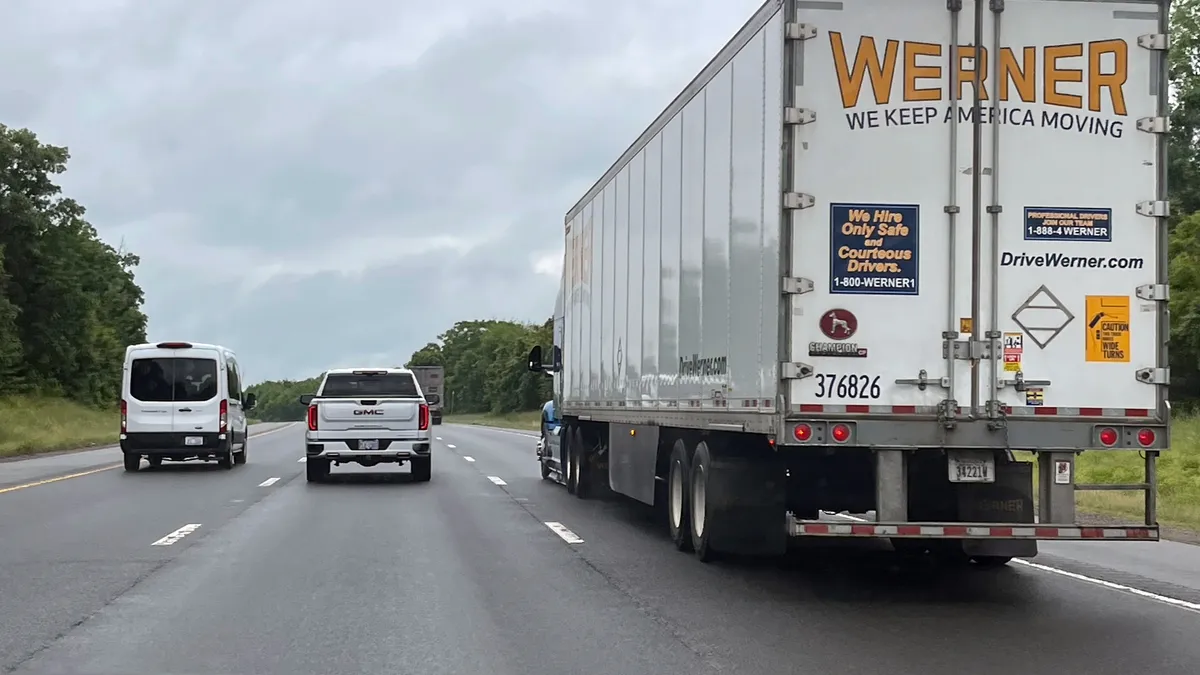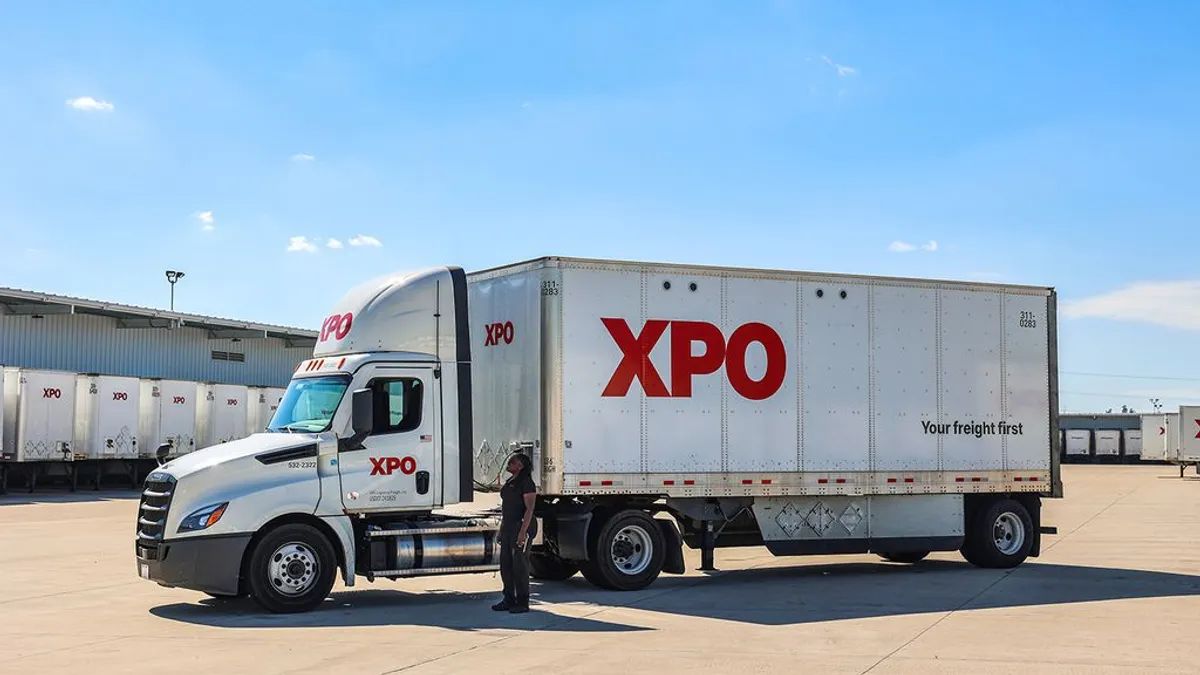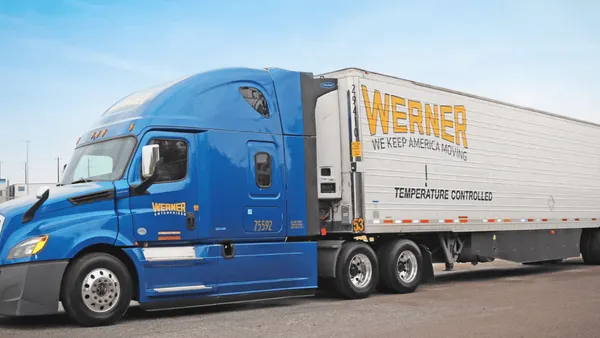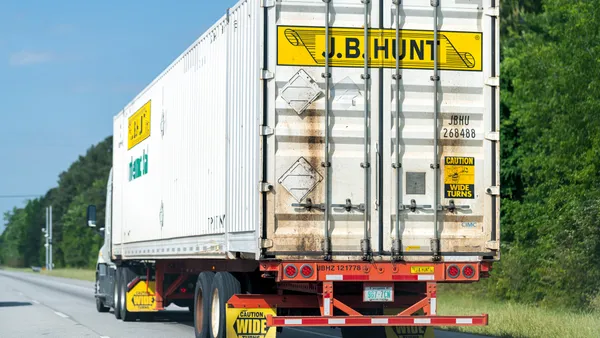Dive Brief:
- Werner Enterprises is receptive to expanding its dedicated business to 70% of its truckload portfolio mix in the near-term, CEO and Chairman Derek Leathers said Tuesday on a Q4 earnings call.
- The Nebraska-based carrier’s average dedicated TL truck count was 5,239 in Q4, while its one-way business truck count dipped to 2,929, according to an earnings presentation. Werner has traditionally sought to keep its dedicated and one-way businesses in a 65-35 mix in its truckload segment.
- While one-way will still present opportunities, the company seeks to shift what it can “into that more stable, durable, dedicated business that has proven itself to be resilient in both good and bad markets,” Leathers said.
Dive Insight:
Werner is OK with shrinking its fleet size if need be and notes the potential to scale its dedicated fleets.
The carrier projects an overall 8,000 truck count in its Truckload Transportation Services segment, the bulk of its business, to remain flat or decrease by as much as 3% this year. In 2023, that truck count decreased by 7% as clients scaled down operations.
Despite the downturn, Werner experienced notable fleet retention and added new customers, but dedicated customers decreased truck counts based on volume needs, mostly do to inventory levels and lack of replenishment, Leathers said.
“There’s clear pressure, especially on the one-way side of the network,” he said. “But our stance is we’ve got to stay disciplined. If you look across especially this earnings season, it’s glaringly obvious that carriers cannot make a re-investable return at current rate levels.”
Several one-way customers in particular are still seeking to get better rates, and Werner expects ongoing pricing pressure during the early part of the 2024 bid season before moderation occurs later in the year, Leathers said.
The one-way business is simply not worth expanding until there’s more of an inflection, and it’s been the driving factor damaging its long-term Truckload Transportation Services margin range, Leathers said.
While the challenging environment has drawn a focus on one-way, dedicated also has seen some margin and inflationary pressure, and the carrier could have some further churn in the first half of the year, according to the company.
But there’s noteworthy upside potential in dedicated.
“We already have a very robust pipeline in dedicated and we’re pricing a considerable amount of opportunities as we speak,” Leathers said. “The net of that is that we think that will be flat to maybe slightly up by the end of the first half with back half growth built in.”












